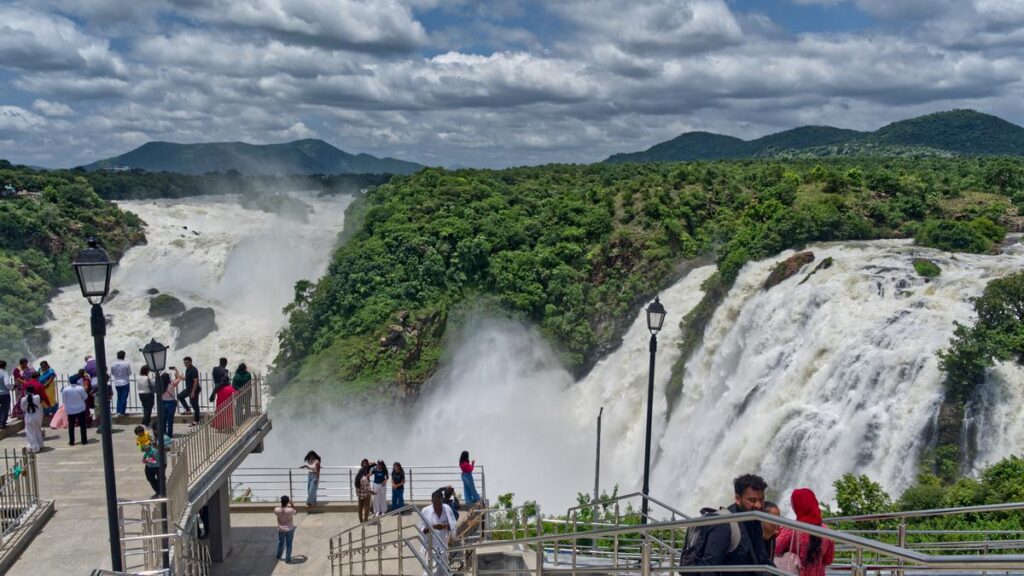
Tourists savouring the beauty of Gaganachukki waterfalls in Malavalli taluk of Mandya district in Karnataka, on July 29, 2025.
| Photo Credit: SRIRAM M.A.
Revival of monsoon in the catchment areas of the rivers Cauvery and the Kabini, and the consequent release of water from the Krishnaraja Sagar and Kabini reservoirs, which are full, have brought alive the visual splendour of the famous Shivanasamundra waterfalls. The waterfalls are about 75 km from Mysuru, and about 130 km from Bengaluru.
Shivanasamudra waterfalls
Tourists savouring the beauty of Gaganachukki waterfalls, part of the Shivanasamundra water network, in Malavalli taluk of Mandya district in Karnataka, on July 29, 2025.
| Video Credit:
The Hindu
The two falls are popularly known as ‘Bluff’. Tourist footfall has increased in recent days given the substantial increase in water released from the Krishnaraja Sagar (KRS) and the Kabini reservoirs upstream.

Meandering along rocky terrain, the Cauvery river splits into two branches carving out a riverine island, named Shivanasamudra, before plunging into gorge with a deafening roar, at two places.
The western branch is the Gaganachukki in Malavalli taluk of Mandya district. The eastern branch is the Bharachukki in Kollegal taluk of Chamarajanagar district. Bharachukki is 1.2 km from a dargah, on the opposite side of the view point at Gaganachukki.
Historically, the falls tend to be a feast for the eyes when the combined outflow from the KRS and Kabini reservoirs ranges between 1 to 1.5 lakh cusecs.
While the combined discharge from both the reservoirs were in excess of 1.2 lakh cusecs on July 27 and 28, it declined to about 80,000 cusecs by July 29 noon. The figure for July 30 pegged the cumulative discharge at about 51,600 cusecs.
However, the decline in release of water from the reservoirs has not diminished the visual splendour of the falls. The sheer vertical drop of water from a height of about 90 metres, or about 300 feet, at Gaganachukki into a horseshoe-shaped gorge below, creates a mist and foam that rises to almost 60 metres, or nearly 200 feet, providing a breathtaking view.
With both reservoirs full, and more rain forecast through August, the inflow to the two dams is likely to see an increase in the days ahead, resulting in a corresponding increase in the outflow as well.
This will ensure more flow in the river and add to the grandeur of Shivanasamudra, where the waterfalls have already added traction to monsoon tourism this year.
Local vendors dispensing tea, coffee and snacks at Gaganachukki, and who make an extra income during the monsoon tourism report a surge in the number of tourists on weekends, mainly from Bengaluru and Mysuru, apart from the nearby regions.
‘’So far, the footfall has been encouraging, thanks to copious release of water from the reservoirs,” said a local vendor at Gaganachukki.
In August 2024, Karnataka Chief Minister Siddaramaiah had spoken of a ropeway at Bharachukki while inaugurating the Jalapatothsava. While the concept is still on paper, stakeholders in the tourism sector believe that there is scope to tap adventure tourism, coupled with monsoon tourism, at Shivanasamudra.
Published – July 30, 2025 03:13 pm IST

